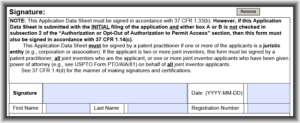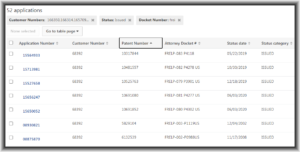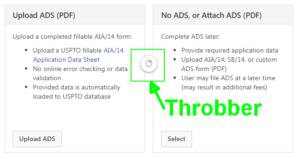
One of the design goals of Patentcenter is to provide the functions of EFS-Web. In EFS-Web, the most frequently carried-out tasks are:
- file a new patent application
- start a new follow-on submission (a subsequently filed document)
- open a saved submission to continue the submission process
So let’s go on a treasure hunt, shall we? Where can we find these three tasks, somewhere on the main menu bar of Patentcenter? The answer is, not one of these three tasks can be found at the place where you would guess it to be based upon the wording of that main menu bar. This is Trouble Ticket CP34. Continue reading “Patentcenter uses wrong words on links”





